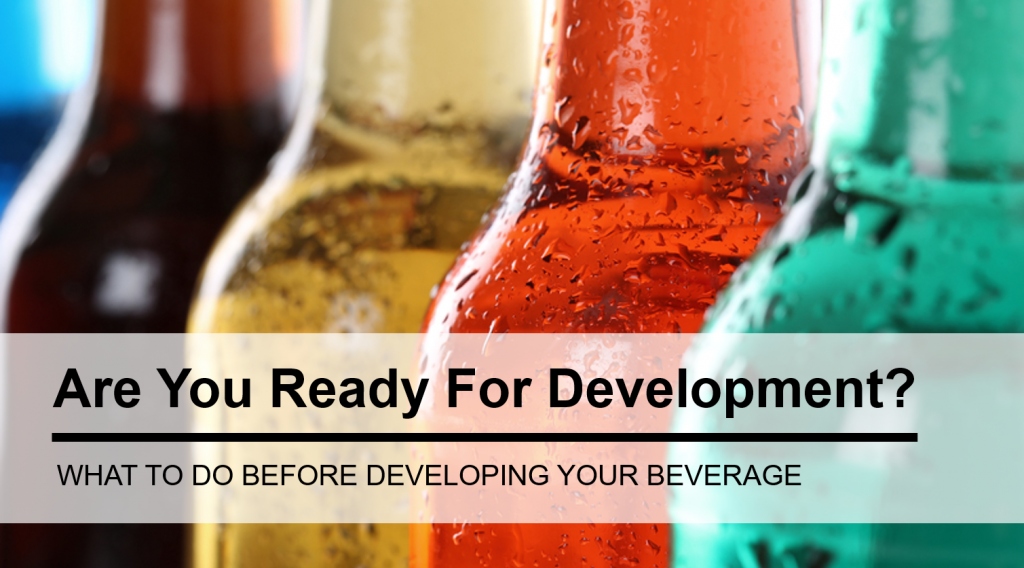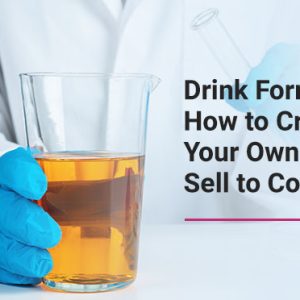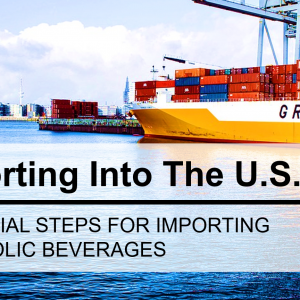It’s easy to get caught up in the excitement of developing your dream beverage. It’s fun to research new ingredients and envision the colorful packaging of your beverage and branded store displays. This vision is an essential part of what will fuel and propel you on your journey, but it’s important not to lose sight of the ultimate goal – building a profitable, scalable beverage company.
Those two objectives – creating your ideal product and building a profitable business – aren’t necessarily at odds, but they will pull you in different directions at times. So how do you make sure you develop a beverage that fulfills your vision and sets you up for long-term success? Going through these four exercises will help ensure you develop beautiful, useful, and profitable products.
1. Assess your current assets and liabilities
Aligned with the well-known Strengths, Weaknesses, Opportunities, and Threats (SWOT) analysis, every beverage company should start with a strong understanding of their strongest skillsets and most significant opportunities and an awareness of their weaknesses and gaps.
Some strengths a beverage may want to leverage are an experienced sales team, distributor connections, exclusive access to a new ingredient or packaging format, a reliable source of funding, or research and development capabilities.
At the same time, it’s essential for a founder or team to be aware of their gaps or areas where they are missing experience, skills, or resources. For a team that hasn’t worked on a beverage project before, some of those gaps might be technical knowledge, supplier connections, or verified financial projections. The good news is that almost any gap can be closed with the right strategy or partnership.
Having a strong grasp on your biggest assets and your potential weaknesses ensures that you build a plan and spend your money in a way that maximizes what you bring to the table and supplements the areas where you need it most. Maybe you have an amazing sales team but need more funding opportunities. Finding a partner who can get you in front of the right people will exponentially increase your chances of success. If you have access to a new and unique ingredient but lack the technical skills to incorporate it effectively into a beverage, the right formulator can help leverage that ingredient in the most appealing way.
What are your biggest strengths, and where do you need the most support?
2. Identify the gaps in the market and supply chain
There is no substitute for studying the market – understanding the consumer and their preferences as well as the competition and what they are missing. Some of the biggest opportunities for beverage companies, however, come from understanding the entire supply chain and how a beverage can gain an advantage by adding value to retailers, distributors, and even co-packers. Those “hidden” points of differentiation can make a significant impact on a beverage company’s success.
As beverage developers start to explore how their product affects the partners required to create, distribute, and sell the product, they can find more creative and impactful ways to innovate. For example, if your product requires a new piece of equipment or line adjustment from a co-packer, you might negotiate a mutually beneficial financing agreement for the change or equipment. Perhaps you design your packaging to provide flexibility and ease of transport for the distributor or study a retailer’s planogram to create a customized point-of-sale idea. The more you build your product vision around an understanding of the systems and people required to make, distribute, and sell it, as well as the consumers who will drink it, the more likely it is to succeed.
What gaps and opportunities do you see for your product in the market and the supply chain?
3. Prioritize what makes you different
The best way to overspend on beverage development is to be unclear about how you plan to compete. The end goal is always to be profitable. A focus on profitability means knowing where your best chance of success lies and organizing around that approach.
There are three main approaches to competing within a market or category: as an innovator, upgrade, or copycat. The approach you choose dictates your levers for success.
Innovators are the most visible but difficult to develop products. Success as an innovator requires spotting an unfilled gap in the market and developing a unique product to fill that gap. Examples of innovators are Seedlip non-alcoholic spirits filling a gap for the sober curious and Spiked Seltzer creating the hard seltzer craze. With an innovative approach, understanding the technical side of beverage development is essential. You need to know what your beverage will require from both a formulation and production standpoint to work.
Upgrades bring a new spin to an existing category, whether it’s a new ingredient, a new packaging format, or an enhanced flavor profile. Bang energy drink is an example of an upgrade as it brings a host of new flavor options to a consumer who is used to the limited flavor options of a Monster or Red Bull energy drink. Upgrades require a focus on both the technical side of developing the beverage as well as a focus on branding to highlight and showcase your points of differentiation.
Copycats are very similar to or the same as other products on the market that will compete with a different approach to branding or branding and pricing. Along with branding, copycats typically focus on reducing costs to be more profitable than the other similar products on the market.
As Dan Reed, Beverage Strategy, Innovation, and Design Partner at Root and Branch Global, simply asks, “If you win, who loses?” This helps visionaries think through their idea and identify what sets them apart
4. Keep optimization at the forefront of your strategy
When it comes to making a profit in the ultra-competitive world of beverages, every detail matters. The most successful beverage plans maximize the process from formulation to production, packaging, and distribution to find efficiencies, reduce costs, and improve quality.
Leverage experienced and reliable vendors and partners as part of your path to success. Consider any recommendations and suggestions that help you get your product to market faster and more cost-effectively without taking away from your unique value proposition.
Developing your beverage requires creativity, time, and money. The result should be a new product that you’re excited to bring to the market, built on a solid plan for a profitable long-term business venture. Balancing those two outcomes will allow you to continue growing and innovate into the future.
How will you navigate the challenging but rewarding initial phases of beverage development?


